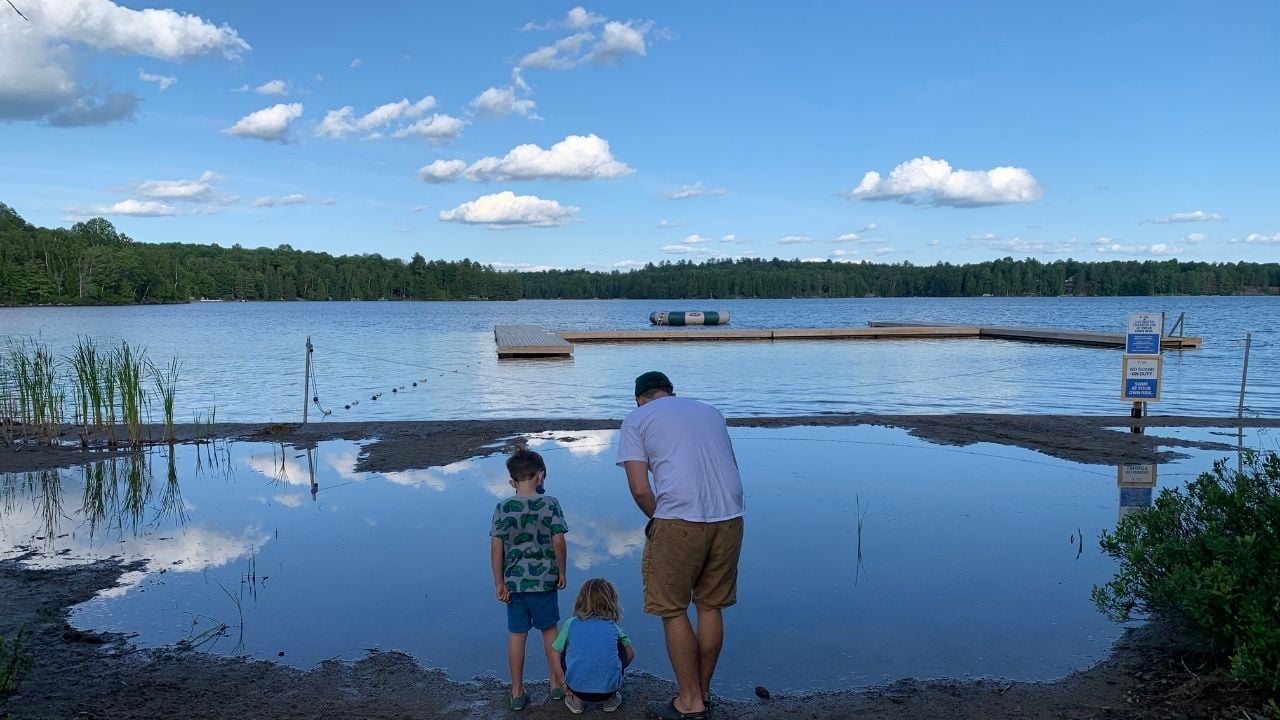
I’d never heard of family camp before we were invited to try it out this summer. Turns out, plenty of traditional overnight camps offer “Family Camp” weeks. At YMCA Wanakita, which is near Haliburton, Ont., an entire side of the camp is usually devoted to family groups only, all summer long. But this year, due to COVID restrictions, the camp decided to operate entirely as a family lodge (no sleep-away camp for kids), taking over both sides of the camp on Koshlong Lake. Instead of having a bunch of kids mixing at overnight camp, the site is only open to small family pods that stick with their household for all activities and meals, essentially using the cabin as you would a cottage rental, with access to all the different outdoor activities and instructors.
Family camp is also a wonderful way to expose your kids to the concept of overnight camp, if you’re considering it for next year, or feeling apprehensive. After a week of visiting with parents, kids will feel more confident and comfortable with the idea of attending solo in the future.
We went during the first week of summer this year, and it was definitely a big change for my school-age kid, who had been doing six hours of Zoom school a day. Suddenly, he was in the woods without wifi. (Sorry, buddy, no Facetiming your friends while playing Roblox, either!) Turns out, we all needed the tech detox and nature-immersion time after more than a year of waaaaaay too many screens.
What activities can kids do?
Our week at Wanakita Family Lodge was a great way to gently coax our kids to try out new activities and sports, all in one spot, that they may never have access to otherwise. Swimming, catching tadpoles, and tetherball were our main activities, since my little guys are only three and six years old. But families with older kids were trying out the kayaks, stand-up paddle boards, outdoor yoga, and learning to sail on beginner-friendly catamaran-style sailboats.
We also managed to get the whole family into a canoe for a quick paddle, but not without a 20-minute lifejacket-related meltdown from our toddler that definitely interrupted a nearby lakefront meditation session. (Sorry, neighbours!)
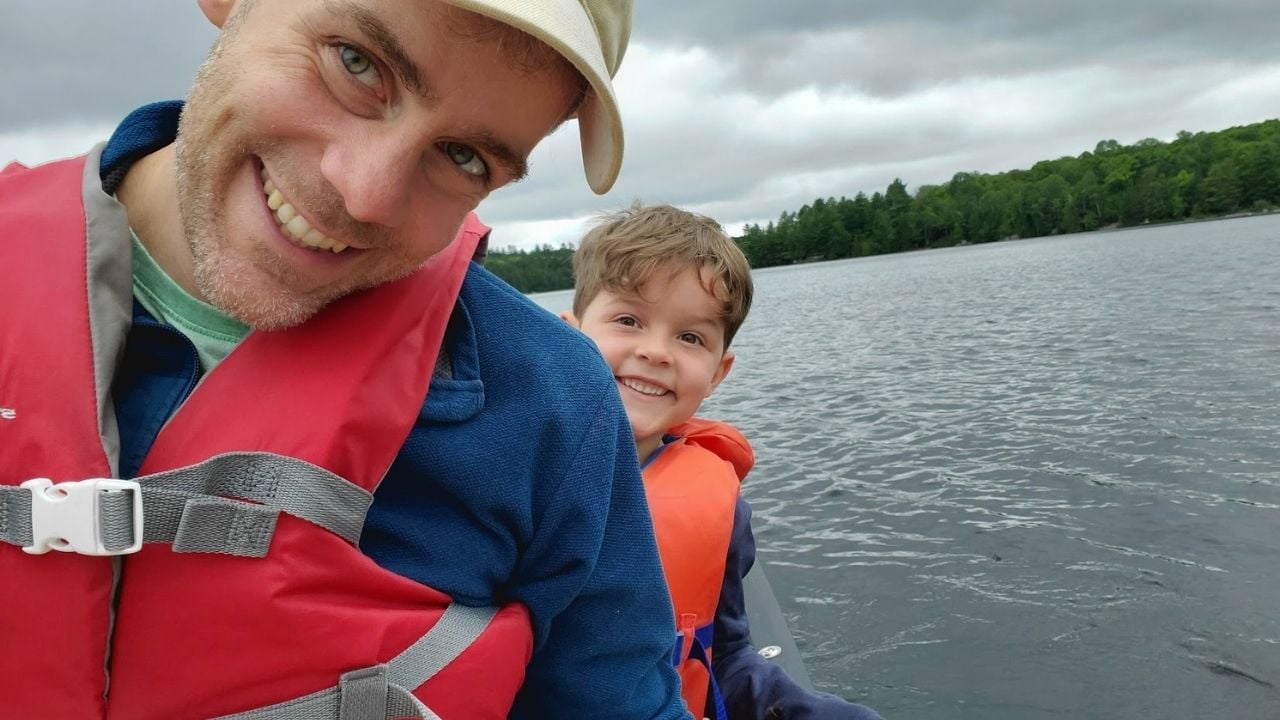
Rental canoes, kayaks, sailboats and stand-up paddle boards are included, with no age minimums. Photo: Courtesy of Ariel Brewster.
There’s also a couple basketball courts, soccer nets, and lots of dirt roads for your kids to race around on their bikes, so they can get a taste of independence while still staying safe. Additional programming includes archery; a climbing wall; both low ropes and high ropes courses; and shelter-building and campfire-building lessons. (You register for these activities in advance, at the Help Desk in the dining hall/main lodge.)
The highlight for our kids was definitely the giant water trampoline (sign-up for your family’s slot ASAP—it’s popular!).
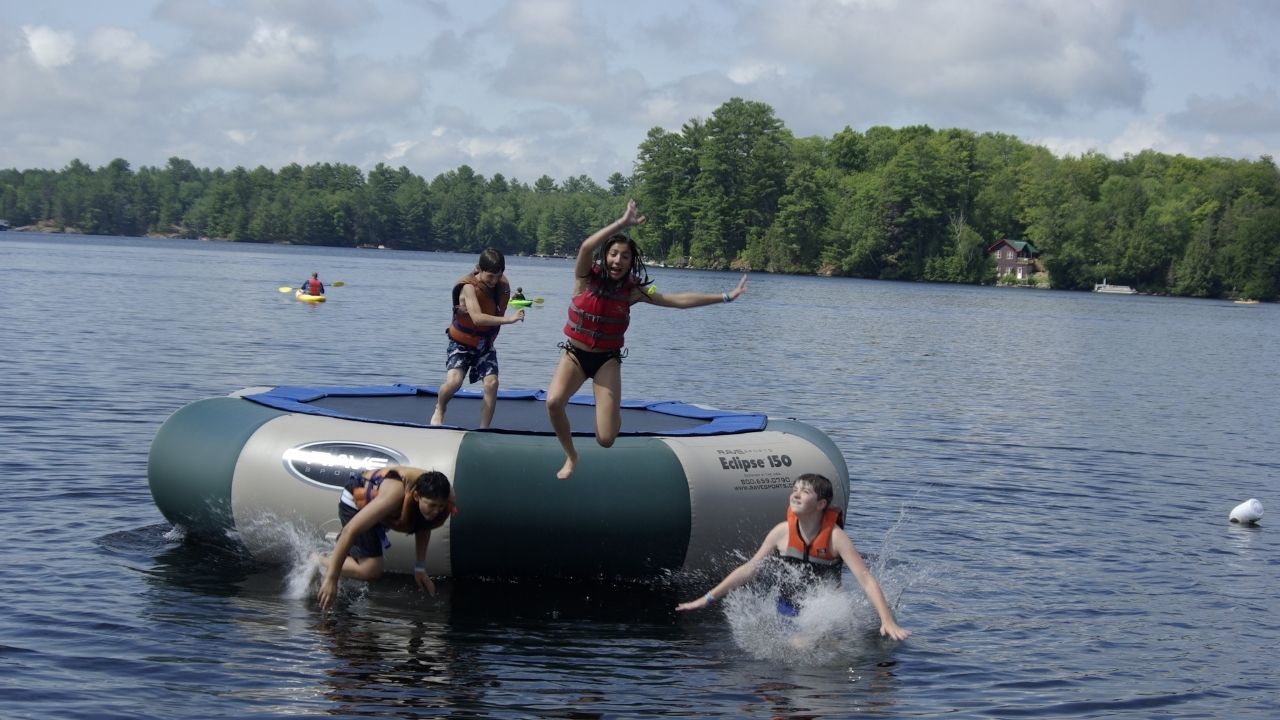
The water trampoline on Koshlong Lake is a kid favourite. Photo: Courtesy of YMCA Camp Wanakita.
The Parent and Tot programming for ages 0-6 is great for preschoolers in their prime Wild Kratts-loving years. We did nature activities like morning scavenger hunts, learning about animal homes and searching for bug habitats. (Unfortunately, due to COVID, you can’t drop off your kids for these activities—parents must tag along.)
Older kids who are independent swimmers (and adults, if you’re so inclined!) can show up for the daily 7:30 a.m. Polar Bear Swim (lifeguards are on duty) and earn a badge by the end of the week.
If you don’t have the best weather (we had an uncharacteristically cold and rainy week), you can play ping-pong indoors at Fenton Hall (masked) or check out toys and puzzles from the main Help Desk. There are also craft kits you can sign up for in advance and pick up each morning. (Make your own hacky sack, stick boats, tie-dye, etc.)
What are the accommodations like at family camp?
It’s a traditional summer camp—cabins with bunk beds—and it truly looks like a scene straight out of a movie. (Fun fact: Wanakita was actually one of the filming locations for Camp Rock, the 2008 Jonas Brothers Disney movie.)
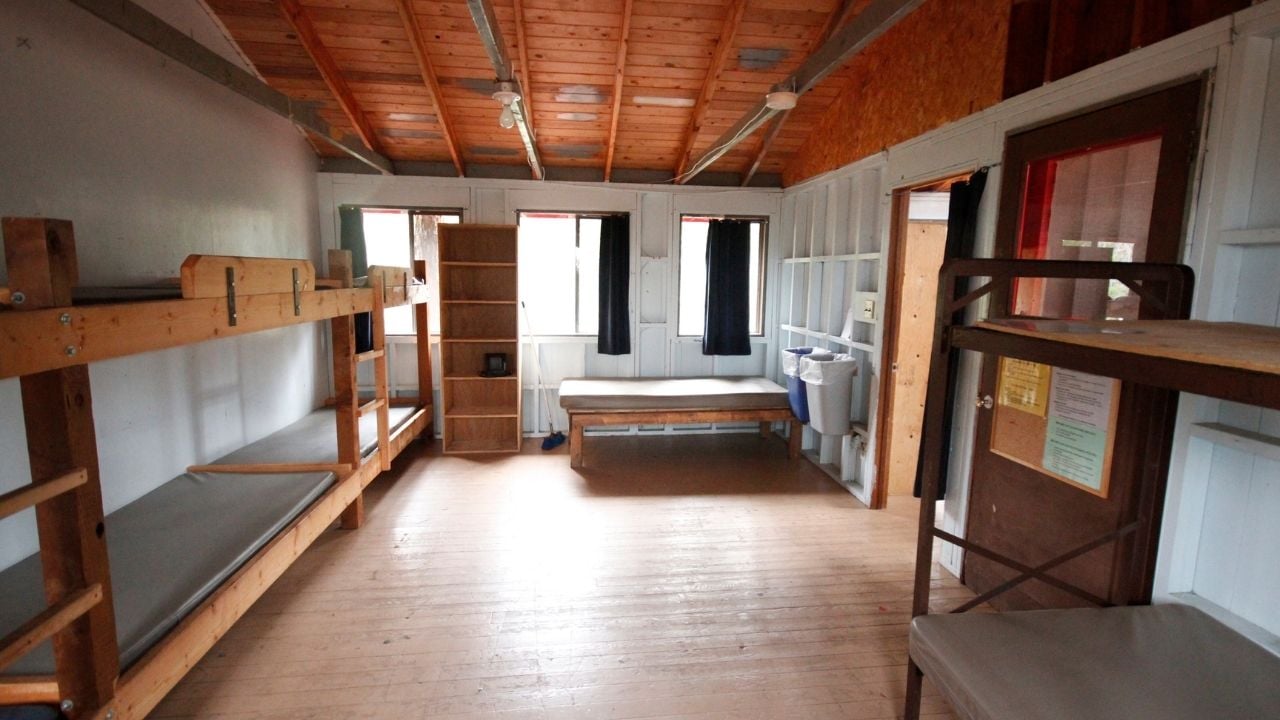
Photo: Courtesy of YMCA Camp Wanakita.
It’s also important to know there are two sides of the camp at Wanakita—east and west—when you’re booking. West is a bit shadier and nestled in the woods, which means the cabins are cool and comfortable, and there’s more privacy, but it’s also a bit buggier. Many of the cabins on the west side are newer and winterized, with washrooms and in-cabin showers—a huge plus for some families who find it’s well-worth the extra fee. (Cabins with bathrooms are $500 extra per week.) Because our youngest is still potty-training, we were pretty grateful for our own washroom, instead of walking to a separate building for every single false alarm. (If you know, you know.)
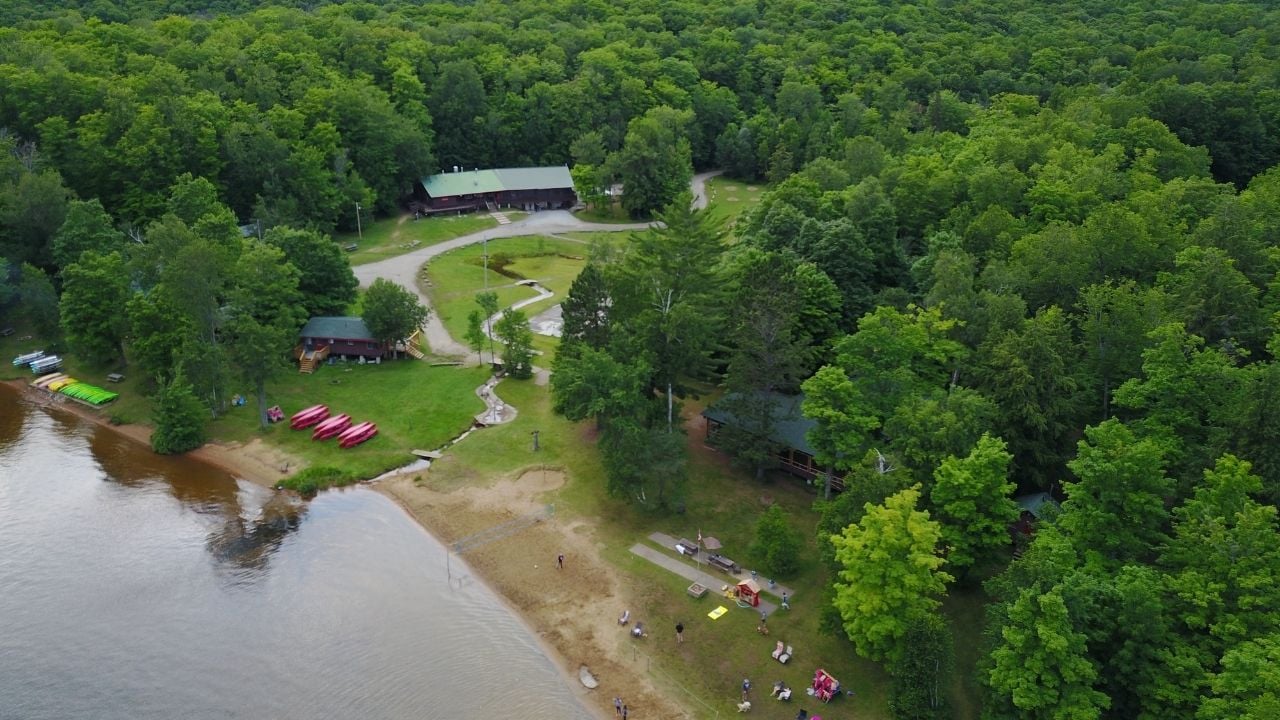
An aerial view of the east side of camp. Photo: Courtesy of YMCA Camp Wanakita.
The east side of Wanakita is more of a ring of cabins arranged around a sunny, central field with a play structure. East is where family camp is usually held, in non-COVID years, and the open layout makes it a bit more social. (Many families have been coming for years and years, and coordinate their week with their friends.) While cabins on the east side don’t have washrooms, the families here are experienced campers and bring lots of accessories and fancy set-ups (their own outdoor lighting and rugs, and screened-in gazebo tents, for example). That side of the lake also has a beach volleyball court and their own swimming and waterfront activities area, as well as a separate dining hall. (The two sides of camp, which are connected by a trail, don’t really mix, and have different staff as well.)
When packing for your trip, save some trunk space for bedding—families must bring their own pillows, towels, sleeping bags and sheets for the beds (they’re all twin-sized bunk beds). You might want a lantern or flashlight for outdoor hangs at night, or for quiet reading in the cabin while your kids are asleep, but the cabins do have electricity and indoor lighting. Firewood and ice are available for purchase at the dining hall/main lodge. Bring your own cooler if you want to keep snacks or milk cold during your stay, and a few beach chairs or camping chairs. Otherwise, you don’t really need a lot of gear.
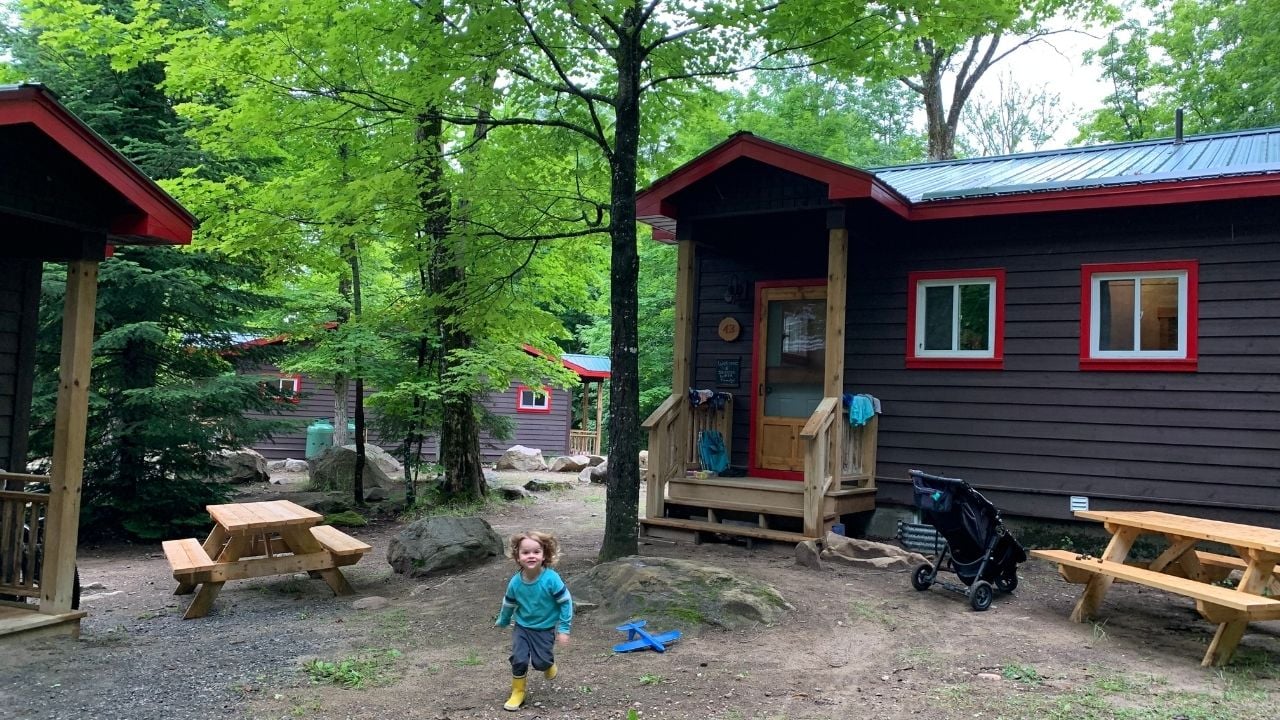
Our cabin on the west side of camp. Photo: Courtesy of Ariel Brewster.
How do meals work at family camp?
The cabins don’t have kitchens—all meals are at the dining hall, just a short walk away—so parents get an entire week off from cooking and meal-planning (yay!). Due to COVID rules, there aren’t giant groups of people dining indoors together, buffet-style. Instead, you pick up your cabin’s numbered bus tub of food and utensils inside the dining hall (masked) and bring it outside to find a table (whereupon you can take off your mask to eat).
On the west side, where we stayed, there were two covered, screened-in porches, an outdoor white tent, and a covered pavilion. You can also bring the tub back to your cabin and eat it at your picnic table, but it’s a lot to lug on foot. (Your car is parked at the front of the camp after you unload your luggage on Sunday—not outside your cabin.)
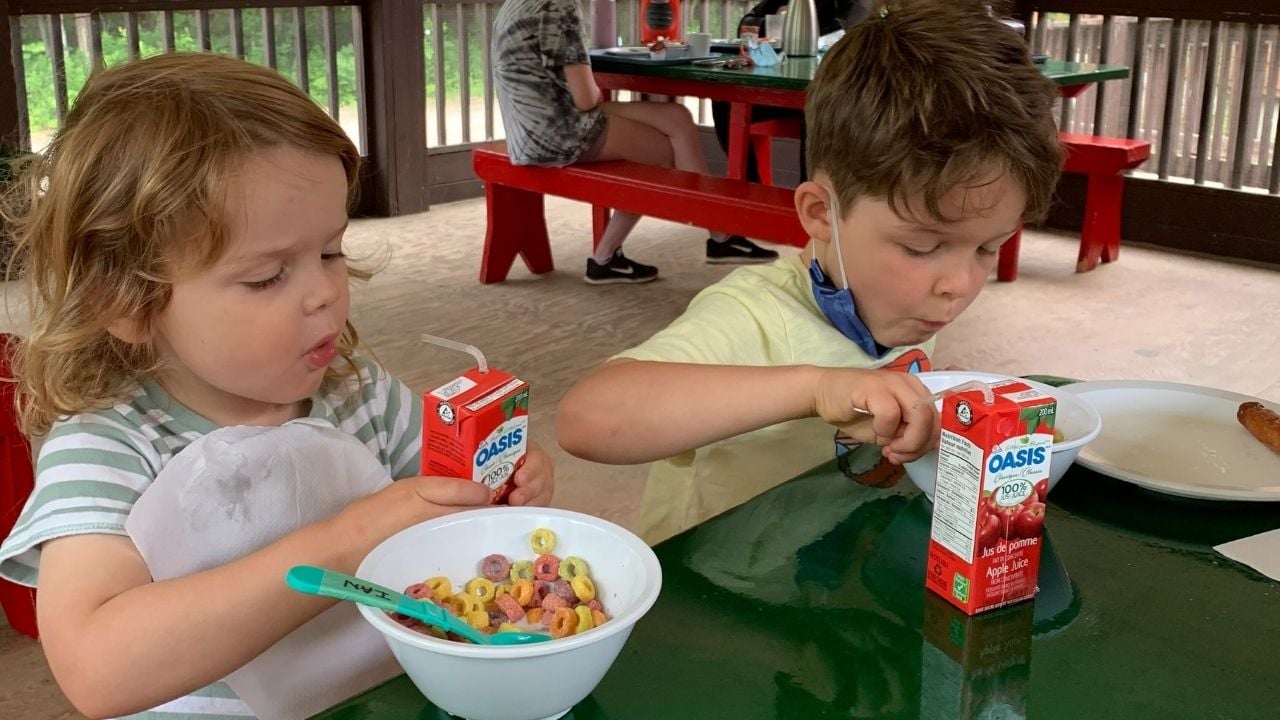
Nothing says “childhood vacation” like Froot Loops and juice boxes for breakfast all week. Photo: Courtesy of Ariel Brewster.
On the day you arrive, you’ll get a menu for the week where you choose all your meals, and select your preferred meal time. You have two options: meals at 8 a.m./12 noon/5 p.m.; or sign up for the 8:45 a.m./12:45 p.m./5:45 p.m. shift. (The dining hall can also accommodate vegetarians/vegans, religious dietary restrictions and most food allergies, with advance notice.)
Parent tip: If you have early-rising kids, bring an electric kettle and some instant coffee for the wee hours before the dining hall opens.
How much does it cost?
The pricing at family camp is per person, with all meals, lodging, and activities included. Adults are $740 each for the week; kids 10-16 years old are $544 each per week; and kids 3-9 years old are $506 each. (Kids under 3 are free.)
Since cottage rentals and camp sites have been almost impossible to book this year, a week at family camp just might be the solution—especially if you’ve already got kids whining that they’re bored. Sometimes, a change of scenery is just what the doctor ordered.
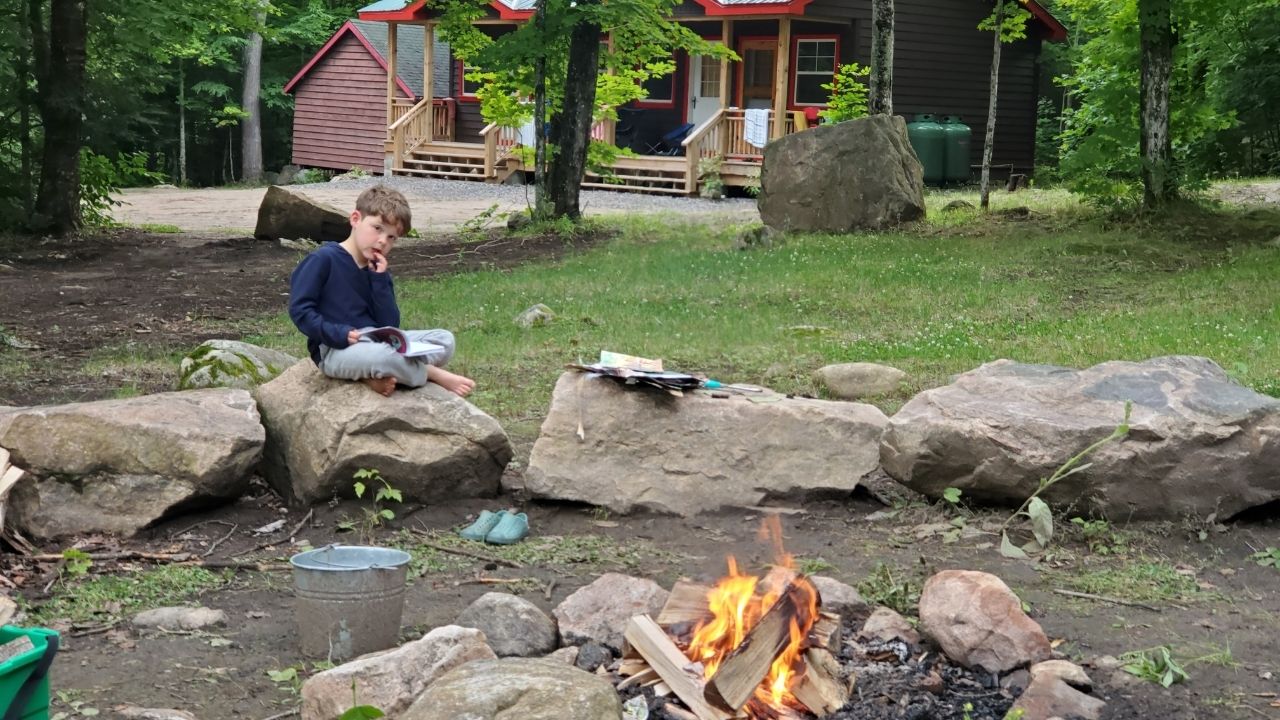
Photo: Courtesy of Ariel Brewster.
It might not sound like much, but our quiet nights around the campfire after dinner were definitely the highlight for us, as parents. After so many months of isolating pandemic life, just chatting with other families outdoors, in a COVID-safe way, while teaching our kids how to build a fire and roast the perfect marshmallow, made the trip memorable.
The post We tried family camp—here’s what we learned appeared first on Today's Parent.
